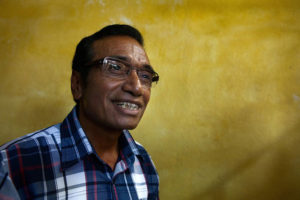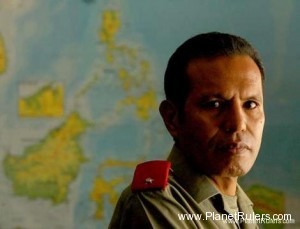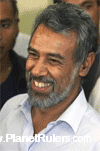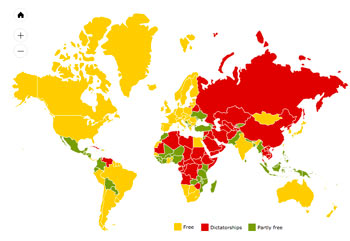José Ramos-Horta, President of East Timor (Elected on Apr 19, 2022 with 62.1% of the vote)

As a founder and former member of Fretilin, Ramos-Horta served as the exiled spokesman for the East Timorese resistance during the years of the Indonesian occupation of East Timor (1975–1999). While he continued to work with Fretilin, Ramos-Horta resigned from the party in 1988, becoming an independent politician.
After East Timor achieved independence in 2002, Ramos-Horta was appointed as the country’s first foreign minister. He served in this position until his resignation on 25 June 2006, amidst political turmoil. On 26 June, following the resignation of Prime Minister Mari Alkatiri, Ramos-Horta was appointed as acting Prime Minister by President Xanana Gusmão. Two weeks later, on 10 July 2006, he was sworn in as the second Prime Minister of East Timor. He was elected as President in 2007. On 11 February 2008, Ramos-Horta was shot during an assassination attempt.
After leaving office as President in 2012, Ramos-Horta was appointed as the United Nations’ Special Representative and Head of the United Nations Integrated Peacebuilding Office in Guinea-Bissau (UNIOGBIS) on 2 January 2013. He stood as the candidate of the National Congress for Timorese Reconstruction in the 2022 election and ended up winning the runoff.
Source: https://en.wikipedia.org/wiki/Jos%C3%A9_Ramos-Horta
Francisco Guterres, Former President of East Timor (Elected on Mar 20, 2017 with 57.1% of the vote)

Born in Ossu in 1954, Guterres has described himself as “the son of a poor family, of humble people”. He is a Roman Catholic and a former guerrilla fighter. At an Extraordinary Conference of FRETILIN in Sydney, Australia in 1998, Guterres was named General Coordinator of the Council of Armed Resistance. In July 2001, he was elected President of FRETILIN. Guterres was elected to the Constituent Assembly in the August 2001 parliamentary election, and he was subsequently elected by the Constituent Assembly as its President; when East Timor gained its independence in May 2002, the Constituent Assembly was transformed into the National Parliament, with Guterres as its President.
In the 2007 presidential election, Guterres ran as FRETILIN’s candidate and campaigned on a populist platform. However, some members of FRETILIN blamed him for the 2006 East Timorese crisis and instead supported Prime Minister José Ramos-Horta, who was running as an independent candidate. In the first round of the election, held on 9 April, Guterres took first place with 27.89% of the vote. He and Ramos-Horta participated in the second round in May, and Guterres lost with 31% of the vote against 69% for Ramos-Horta. He accepted the result and congratulated Ramos-Horta.
Guterres was re-elected to parliament in the June 2007 parliamentary election as the first name on FRETILIN’s candidate list.
Source: https://en.wikipedia.org/wiki/Francisco_Guterres
 José Maria Vasconcelos, President of East Timor (elected on Apr 16, 2012)
José Maria Vasconcelos, President of East Timor (elected on Apr 16, 2012)
José Maria Vasconcelos, popularly known by his nom de guerre Taur Matan Ruak (Tetum for “Two Sharp Eyes”) is an East Timorese politician who was elected as President of East Timor in April 2012. Before entering politics, he was the Commander of the FALINTIL-Forças de Defesa de Timor-Leste (F-FDTL), the military of East Timor, from 2002 until 6 October 2011. Prior to serving in the F-FDTL, he was the last commander of the Armed Forces of National Liberation of East Timor or FALINTIL (Forças Armadas para a Liberação Nacional de Timor Leste), the insurgent army which resisted the Indonesian occupation of the territory, from 1975 to 1999.
Leaving the military in 2011, he stood as an independent candidate in the 2012 presidential election and prevailed in the second round of the vote, held in April 2012.
On 7 December 1975, when Indonesia invaded East Timor, Taur Matan Ruak took to the hills with the recently formed FRETILIN Army, FALINTIL. As a combatant, he participated in battles against the Indonesian military in Dili, Aileu, Maubisse, Ossu, Venilale, Uatulari and finally in Laga on the northeastern coast, where he eventually stayed. Major-General Ruak’s first official FALINTIL appointment was at the end of 1976. From 1976 to 1979, he rose through the FALINTIL ranks in the two eastern military sectors, the Central East Sector and the Eastern Point, or the Ponta Leste Sector. Then he became a company commander.
Taur Matan Ruak played a role in the 2006 East Timorese crisis. On 2 October 2006, the United Nations Independent Special Commission of Inquiry made a number of recommendations including that several individuals be prosecuted. Notably, it found that Interior Minister Rogerio Lobato, and Defence Minister Roque Rodrigues and Defence Force Chief Taur Matan Ruak acted illegally in transferring weapons to civilians during the crisis.
Ruak resigned from his position as commander of the F-FDTL on 1 September 2011. At the time there was speculation that he was considering running for president. Ruak stated that he would make a decision on standing for election during 2012.
He was formally decommissioned by President José Ramos-Horta on 6 October 2011.
Taur Matan Ruak and others regrouped the following day at the base of Monte Legumau (Monte Apara) and recommenced guerrilla operations after the collapse of the last Timorese resistance base at Matebian Mountain on 22 November 1978. He was ordered to carry out guerrilla activities in the east after the death of Commander Nicolau Lobato in December 1978. During a mission to locate survivors of the annihilation campaign, Taur Matan Ruak was captured in the Viqueque area by Indonesian Army forces on 31 March 1979. After 23 days he managed to escape and rejoin other FALINTIL forces in the mountains.
In March 1981 he was appointed Assistant Chief-of-Staff of FALINTIL, responsible for the operational command of the Eastern Sectors and later the Central Sector. Taur Matan Ruak was promoted and made responsible for strategic planning of commando operations in the Eastern sector in March 1983. Between 1984 and 1986 Brigadier Ruak was transferred and served as military adviser for commando operations in the Western Sector. After nearly 10 years of operational experience he was promoted to Deputy Chief-of-Staff. After 1986, he was responsible for all commando operations throughout Timor Leste.
In November 1992, Commander-in-Chief Xanana Gusmão was captured in Dili. Taur Matan Ruak was promoted to Chief-of-Staff. Mr. Ruak became the Commander of FALINTIL after the death of Commander Konis Santana on 11 March 1998. Xanana Gusmão resigned from FALINTIL and Taur Matan Ruak was appointed the Commander-in-Chief of FALINTIL. With the Restoration of Independence on 20 May 2002 he became the Chefe Estado Maior General Forças Armadas (CEMGFA or Chief of the Armed Forces) and was promoted to Major General in 2009.
General Ruak is married to Isabel da Costa Ferreira.
A presidential election was held in Timor-Leste on 17 March and 16 April 2012 in order to choose a president for a five year term. Incumbent President Jose Ramos-Horta, who was eligible for a second and final term as president, announced that he would seek nomination to be a candidate in the election. The election was seen as a test for the “young democracy” in seeking to take control of its own security. Taur Matan Ruak provisionally beat Francisco Guterres in a second round runoff.
Kay Rala Xanana Gusmão, Prime Minister of Timor-Leste (East Timor)
Date of Birth:
June 20, 1946
Place of Birth:
Manatuto, Timor-Leste
Kay Rala Xanana Gusmão was born on June 20, 1946 in Manatuto, Timor-Leste (East Timor). He was raised in the country, with a brother and five sisters. His father was a schoolteacher. He completed primary and started secondary school at the Catholic mission of “Nossa Senhora de Fátima” in Dare and then went on to Dili. He started to work very early in life, mornings as a chartered surveyor and afternoons teaching at the Chinese school. In April 1974 he joined the staff of “A Voz de Timor” (the Voice of Timor).After the Carnation Revolution in Portugal on 25th April 1974, and faced with the opportunity for self-determination and independence, Kay Rala Xanana Gusmão decided to join the newly formed Associação Social Democrata –ASDT (Social Democrat Association) which was later that same year transformed into the Revolutionary Front for an Independent Timor-Leste (FRETILIN). Having worked as a journalist and photographer, Kay Rala Xanana Gusmão took on the party’s job of Deputy-Director of the Department of Information.
On December 7, 1975, after a series of border-armed incursions into the territory of Timor-Leste, Indonesia decided to invade the capital, Díli. Following the death of the then President of FRETILIN, Nicolau Lobato in December 1978, and coupled with the loss of a majority of the Central Committee Members of FRETILIN, Kay Rala Xanana Gusmão was left with the task of reorganising the struggle. In March 1981, he organised the first National Conference of the FRETILIN, during which he was elected leader of the Resistance and Commander-in-Chief of the FALINTIL (National Liberation Armed Forces of Timor-Leste). In March 1983, Kay Rala Xanana Gusmão demonstrated his pragmatism by initiating formal negotiations with the Indonesian Armed Forces (ABRI/TNI) leading to a cease-fire, which lasted until August the same year.
He conceived and implemented the Policy of National Unity that translated into active cooperation with members of the Catholic Church and with the transitional authorities of Timor-Leste. Kay Rala Xanana Gusmão took advantage of the five-month cease-fire to develop the first organised national clandestine network, known in Portuguese as ‘Frente Clandestina’. In 1988, the success of the initiative for National Unity prompted Kay Rala Xanana Gusmão to create the CNRM – National Council of Maubere Resistance, as an expression of a non-partisan national command of the struggle; CNRM later became CNRT, National Council of Timorese Resistance.
A year after the Santa Cruz massacre, Kay Rala Xanana Gusmão, after 17 years of guerrilla warfare, was captured on November 20, 1992 in the capital Díli. Faced with international commendation, Kay Rala Xanana Gusmão faced a kangaroo-court trial and was imprisoned in a prison reserved for criminals only, but amid pressure from the international community, the Indonesian authorities were forced to transfer him to Cipinang prison reserved for political prisoners.
In prison, Xanana Gusmão devoted his time to the elaboration of the strategies of the Resistance, while studying Bahasa Indonesia (the Indonesian language), English and Law. He also painted and wrote poetry, cultivating a talent already recognised in 1975 when he won the Timor Poetry Prize with his poem “Mauberíadas”. Some of his paintings were sold, the payment of which was donated to the Resistance at Xanana Gusmão’s request. In 1994, some of his political essays were published in a book, Timor-Leste – um Povo, uma Pátria, (East Timor – a People, a Nation) Ed. Colibri, Lisbon.
In April 1998, at the East Timorese National Convention in the Diaspora, which established the National Council of Timorese Resistance (CNRT), Xanana Gusmão was reaffirmed by acclamation as leader of the East Timorese Resistance and President of CNRT.
Following increasing international pressure to release him and the statement by President Habibie of Indonesia on granting independence to Timor-Leste if the outcome of a popular consultation was to reject the autonomy plan proposed by his government, Kay Rala Xanana Gusmão was transferred from Cipinang Prison to house arrest in Salemba, Central Jakarta, on 10 February 1999.
The rapid development of the East Timorese political process and the generalised international recognition of Gusmão’s statesmanship and leadership were the reasons for the numerous visits to his prison-house by foreign government representatives, including US Secretary of State, Madeleine Albright, former US President, Jimmy Carter, Australian Foreign Minister, Alexander Downer, and Japanese Foreign Minister, Masahiko Komura.
The UN-sponsored referendum on 30 August 1999, which overwhelmingly rejected the autonomy proposal put forth by Indonesia, signalled the end of the Indonesian occupation of Timor-Leste and the beginning of the transitional process led by the UN in Timor-Leste. This was undoubtedly the first democratic act in Timor-Leste’s history.
Kay Rala Xanana Gusmão was released from house arrest on 7 September 1999.
In August 2000, the First National Congress of CNRT, held in Díli, elected Kay Rala Xanana Gusmão President of the CNRT/National Congress. From November 2000 to April 2001, Kay Rala Xanana Gusmão was the Speaker of the National Council, an all-Timorese legislative body of the Transitional Administration of East Timor, comprised of political party, civil society representatives, pro-autonomy groups and representatives from several religious beliefs.
The CNRT/CN was dissolved on 9 June 2001. After the dissolution of CNRT/CN, Kay Rala Xanana Gusmão focused his efforts on the AVR – Association of Resistance Veterans, – an organisation that encompasses former members of the clandestine network and aims to create conditions for their skilled participation in the country’s development process.
On 14 April 2002, Kay Rala Xanana Gusmão was elected President of Timor-Leste and was sworn-in as the President of the Democratic Republic of Timor-Leste on 20 May 2002. He served as President of the Republic until the end of his term of office in May 2007.
After leaving the Presidency, Kay Rala Xanana Gusmão was elected President of the newly established political party formed in April 2007, CNRT – “National Congress for the Reconstruction of Timor-Leste”. For the whole month of June, Kay Rala Xanana Gusmão campaigned during the legislative elections across the country. On 30th June, the legislative elections were held and in the final results, CNRT received the second highest number of votes and immediately formed an alliance with three other parties – PD (Democratic Party) and the ASDT-PSD Coalition called the AMP (Alliance with Parliamentary Majority), thus securing 37 out of the 65 seats in the National Parliament.
On 3rd August 2007, H.E. Dr. José Ramos-Horta, President of the Republic, officially invited the AMP to form the next Government.
On 8th August 2007 at the Lahane Presidential Palace, the IV Constitutional Government was sworn-in with Kay Rala Xanana Gusmão as Prime Minister of the Democratic Republic of Timor-Leste. The Government’s term of office ends in 2012.
PRIZES:
1975: East Timor Poetry Prize
1999: European Parliament Sakharov Prize
2000: Kwangju (South Korea) Peace Prize
2000: Sydney Peace Prize
2002: North-South Prize, North-South Observatory (European Union)
2002: UNESCO Félix Houphouët-Boigny Peace Prize
2002: “Honorary Adult Friend”, Children’s Award, Sweden
2003: 2003 Path to Peace Award, Path to Peace Foundation
2003: International Herald Tribune “Leadership with Integrity” Award
2003: BusinessWeek “Stars of Asia” Award
AWARDS:
1995: Honorary Citizen of Brasília, Brazil
1998: Order of Freedom, Portugal
1998: Honorary Citizen of São Paulo, Brazil
1999: Honorary Doctorate, Lusíada University, Lisbon, Portugal
2000: Order of Merit, New Zealand
2000: Honorary Citizen of Lisbon, Portugal (awarded the Gold Key of Lisbon City)
2000: Medal of the Vice-Presidency of the Federative Republic of Brazil
2000: Order of Merit José Bonifácio, Grau de Gran-Oficial, University of the State of Rio Janeiro
2000: Honorary Doctorate, University of Oporto, Portugal
2002: Grande Colar da Ordem do Cruzeiro do Sul, Brazil
2003: Honorary Degree of Doctorate of Laws, Victoria University
2003: Honorary Knighthood of the Grand Cross of the Order of St. Michael & St. George
2004: Honorary Law Doctorate Degree, Suncheon National University, Korea
2006: Grande Colar da Ordem de Dom Infante, Portugal
2006: Honorary Philosophy Doctorate Degree, University of Takushoku, Japan
Married Emilia Batista, 1969 (div) 2 Children
Married Kirsty Sword Gusmão, 2000, 3 Children
For further information:
Media Relations Unit
Gabinete do Primeiro Ministro/Office of the Prime Minister
Palácio do Governo / Palace of the Government
Dili, Timor-Leste
Contacts:
Phone (Landline) +670 332 2026
Source: http://timor-leste.gov.tl



